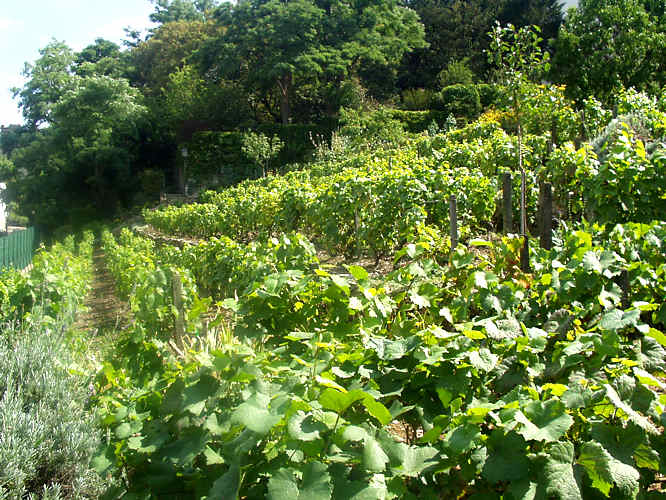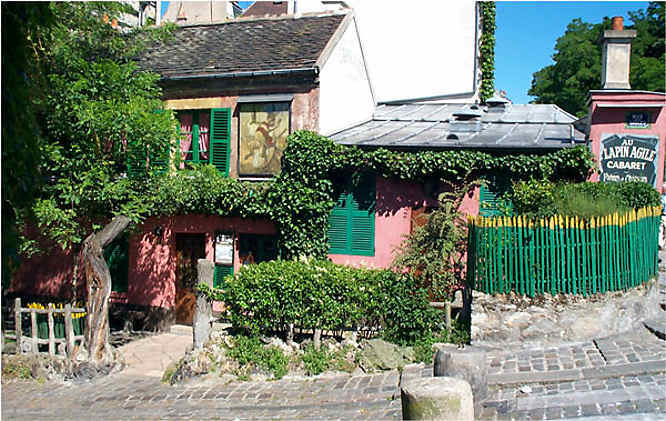The Paris Montmartre Vineyard
Back in the Middle Ages nuns made and sold wine on the hill. The Abbey of Montmartre, became one of the richest in France. In the late 1400's, ruined by war, the nuns were forced to sell off their land.

Commercial winemakers took them over. In 1576 new laws were passed that meant that wines entering Paris were heavily taxed. The fact that Montmartre was outside the old city limits of Paris meant that it was free from those Paris imposed taxes.
It gradually became a popular drinking area that developed into a center of decadent entertainment at the end of the 19th century and the beginning of the 20th century
The Montmartre Vineyard Back in the Middle Ages nuns made and sold wine on the hill. The Abbey of Montmartre, became one of the richest in France. In the late 1400's, ruined by war, the nuns were forced to sell off their land. Commercial winemakers took them over. In 1576 new laws were passed that meant that wines entering Paris were heavily taxed. The fact that Montmartre was outside the old city limits of Paris meant that it was free from those Paris imposed taxes.
It gradually became a popular drinking area that developed into a center of decadent entertainment at the end of the 19th century and the beginning of the 20th century. The Moulin Rouge, and at Le Chat Noir became popular cabaret venues. There is still a small vineyard in the Rue Saint-Vincent, which produces about 500 litres per year. It is the last vineyard in Paris. It is so strange to see grapes planted in stone terraces on a steep slope, growing on the vine in the middle of the city.
The profits from the sale of the wine go to charity. You have to poke the lens of your camera through the wire mesh fence. The gate to the vineyard is firmly locked with a Entry Forbidden 'Entree Interdite' sign attached to it. The vineyard is never open to the public.

Au Lapin Agile cabaret night club
Au Lapin Agile cabaret night club 22, Rue Saules is near the Montmartre vineyard. It was originally called 'Cabaret des Assassins'. The story goes that a band of assassins broke in and killed the owner's son. In 1875, artist Andre Gill painted a sign that was hung outside the night club. It was a picture of a rabbit jumping out of a cooking pot. Locals gave the club the nickname 'Le Lapin a Gill', 'Gill's rabbit'.
Over time the name evolved into 'Cabaret Au Lapin Agile', or, the Nimble Rabbit Cabaret. It became a favorite spot for struggling writers and artists, like Picasso, Modigliani, Apollinaire, and Utrillo. Au Lapin Agile also was popular with pimps, eccentrics, down-and-outs, revolutionaries, anarchists, students as well as well-heeled bourgeois who were out on a lark. The Lapin Agile Cabaret is still going and keeping alive the traditions of the Montmartre, with guests and singers joining together to sing choruses from well-known French songs. The cabaret's sign, is still visible and has come to symbolise Montmartre.
Travel books

